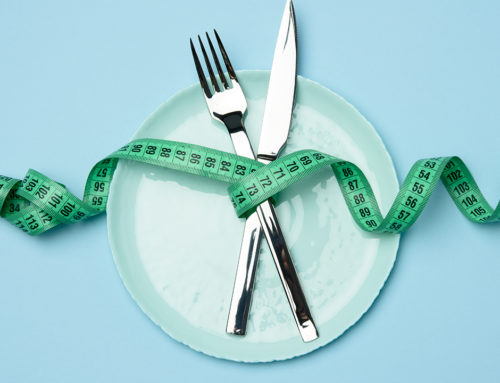Almost everyone considers summer to be “cutting” season, but you should really be maintaining the progress you made during your springtime diet by the time the hottest months of the year come around.
Remember, every bit of fat you pile on while you’re gaining muscle will have to be peeled off later. There’s really no good reason to eat an absurd amount of calories.
No matter how ready you feel right now, there are plenty of ways to maximize your transformation and make yourself as lean and muscular as possible for the summer. These are a few of the most effective tips for maximizing your summer transformation.
Start in the spring
It bears repeating – you’ve got to start dieting now if you want to look beach-ready by summer. Sure, there are some guys who can clean up their diets for just a few weeks and look fine, but they’re the exception, not the rule. If you’re dealing with average fat-loss genetics, you’re going to need a few months of concentrated effort. It’s better to knuckle down now than to suffer when you should be having plenty of fun.
Does this mean you should immediately switch to a hard-cutting diet if you’re still bulking? Not necessarily. If your calories are still high and you’re not gaining weight too fast – or at all – then you can simply reduce your calories by about 500 each day. It could be the only change you need to make at first. Your metabolism is already revved up from all the food you’ve eaten, so you don’t need to throw yourself into the depths of a severe fat-loss diet. If you train and diet right, you shouldn’t ever have to starve yourself to get lean.
Do more, not less
It’s always better to train more and eat more than cut back on both, whether you’re bulking up or cutting down. Conventional wisdom says you’ll have to cut back on training volume to accommodate the lower energy intake, but it’s better to keep your workload the same and only just cut back on food as much as necessary to shed that fat. By keeping your training volume – and intensity – high while you’re still eating plenty of clean food, you turn your body into a veritable fat-burning furnace.
How should this look in your own training program? Well, let’s say you’re already lifting fi ve times per week while you’re bulking or maintaining. When it’s time to diet, keep the volume and intensity of those sessions exactly the same. You can even keep trying to add weight and reps. Don’t let yourself get weaker, because strength loss almost always accompanies muscle loss.
You can also add a couple days each of low-intensity cardio and high-intensity interval training. Before you even cut back on your daily macronutrients (protein, fat and carbs) and calories, just cut out all the “extra” junk you might normally eat, then see if the cardio alone starts to strip the fat for a couple of weeks. That’s another reason why it’s best to give yourself a good three to four months to diet – you get some time to see what’s working. Plus, you don’t have to crash-diet for fear that a slower approach won’t get you lean in time.
Eat clean
This may be a no-brainer to some of you, but the whole if-it-fits-your-macros fad has really got out of hand. Sure, you can occasionally replace your potatoes or rice with a pop tart and the occasional trip to a fast-food joint won’t kill you. But if you want the best results possible in the least amount of time, you need to eat “clean.” Your carbs should come from potatoes, sweet potatoes, whole grains, fruits and vegetables. You should get your protein from chicken, beef, fish and other quality animal sources. Your extra fats should be found in eggs, avocados, healthy oils and nut butters. There’s a damn good reason why most of the guys who get into good shape and stay in good shape don’t keep crap in their diets.
Embrace nutrient timing
Carefully timing the intake of carbs and fats also used to be a no-brainer, but a lot of today’s trainees claim they can eat whatever the hell they want at any time as long as their daily calories are under control. Does that mentality work for getting leaner and healthier? Absolutely. But are you going to be able to get lean without losing muscle by ignoring nutrient timing? Forget about it.
The most important rule is to time your carbs – both starches and sugars – around your workout. Some guys don’t feel like they need pre-workout carbs at all, but it’s a smart idea to have at least some rice, potatoes or oatmeal before you train. You should keep some carbs in the first meal after training too. This meal should be high in carbs, fairly high in protein and ideally lower in fats.
Speaking of fats, they’re going to be your main “energy” nutrient for most of the day. Other than the times before, during and after training, most of your meals should consist of protein, vegetables and some added fats. Eating too many calories makes you fat – not dietary fat itself – so eat up. You’ll actually make less progress with your diet if you avoid fat altogether.
Track everything
You don’t have to count every calorie and macronutrient you consume, but you do need to keep tight control over your foods and portion sizes. If anything, it’s probably easier to just have set amounts of foods to eat every day, rather than eating a larger variety with the same daily macros.
Whichever method you choose, you must be consistent. When you’re hungry, “one spoonful” can easily become two or three and every portion of carbs is going to be at least a little bit bigger than it should be. Your mind plays tricks on you when you’re dieting, but numbers don’t lie. If you really want to get ripped in the next few months, don’t cut corners. When you don’t, the new you will be around the corner.
Find weightloss and cutting advice and more in every issue of TRAIN magazine.







